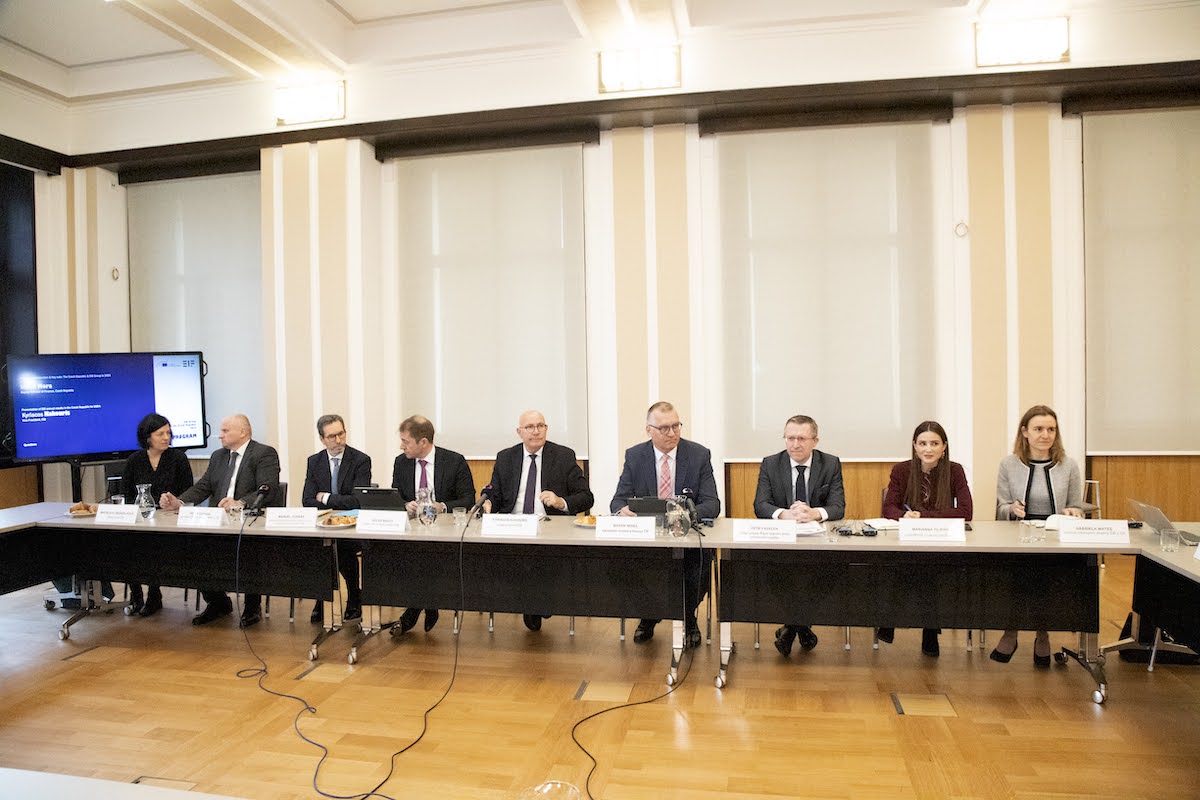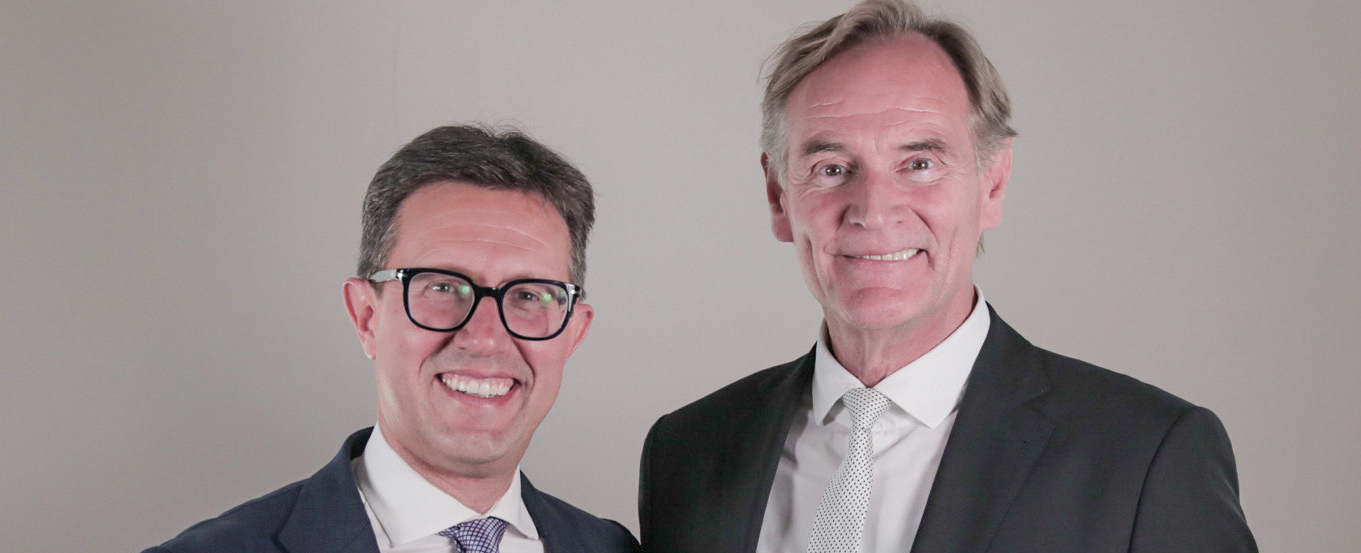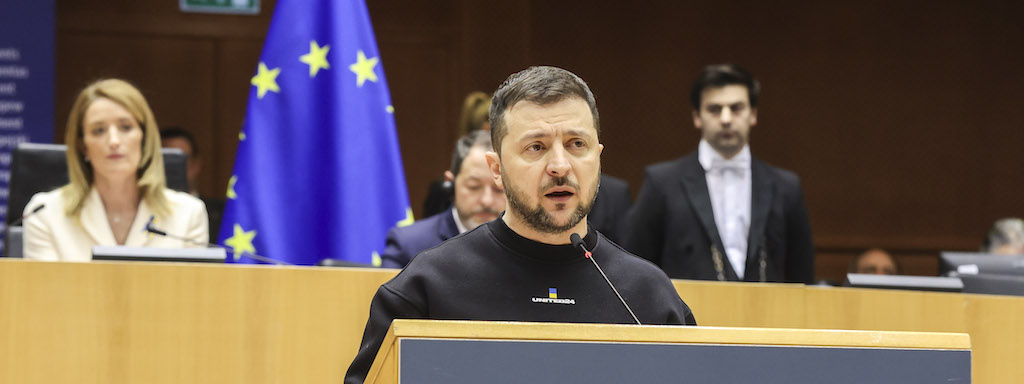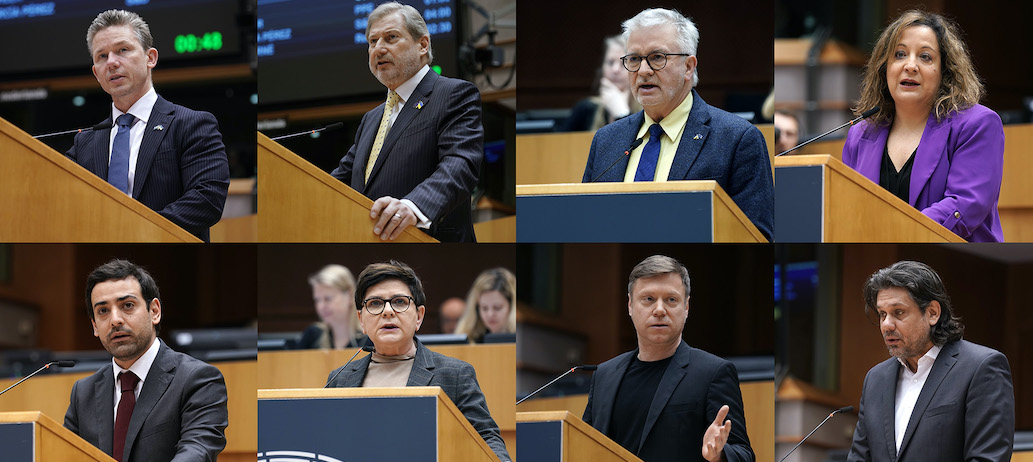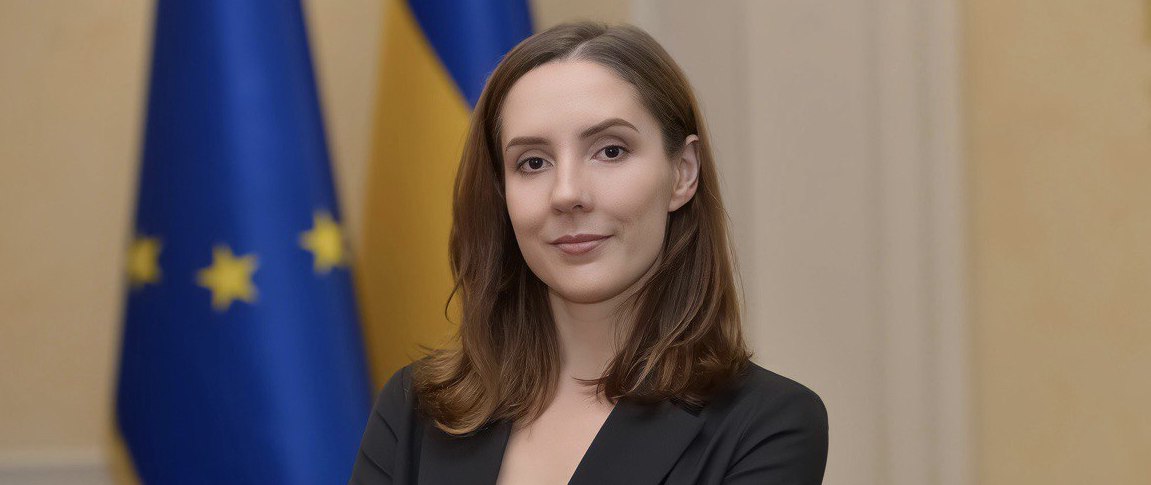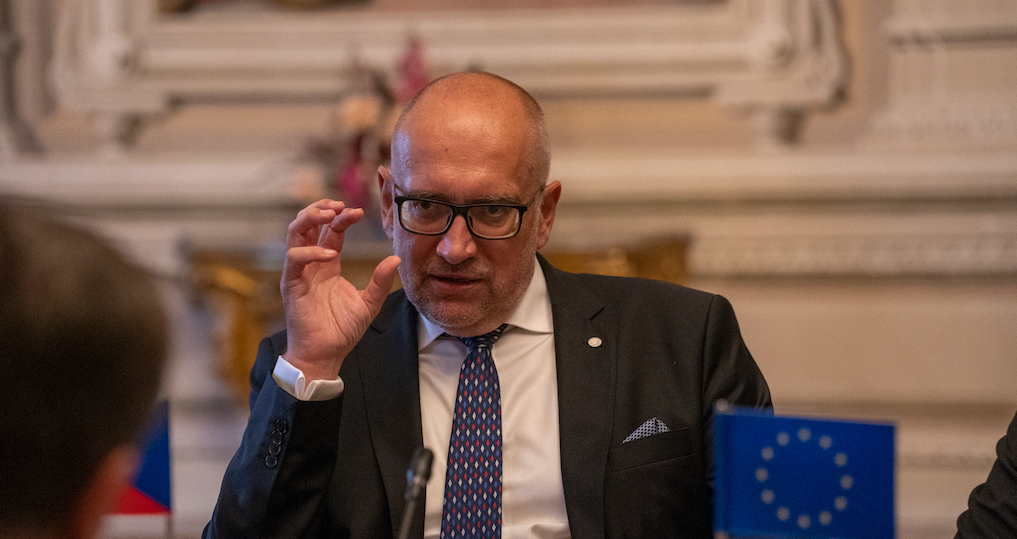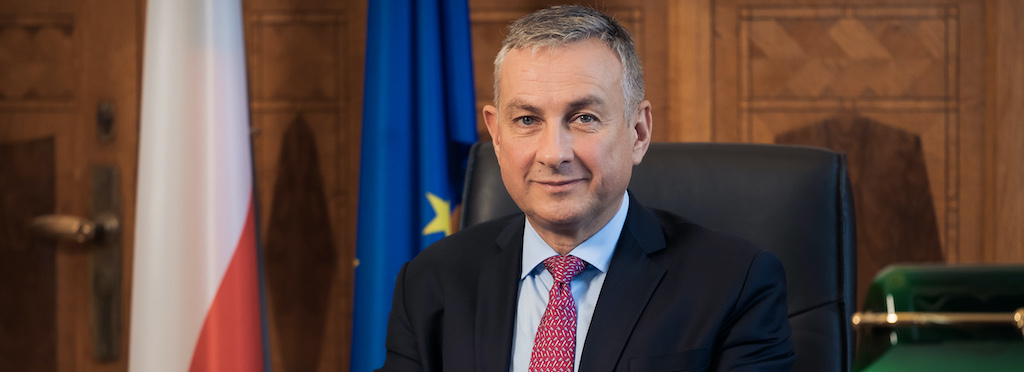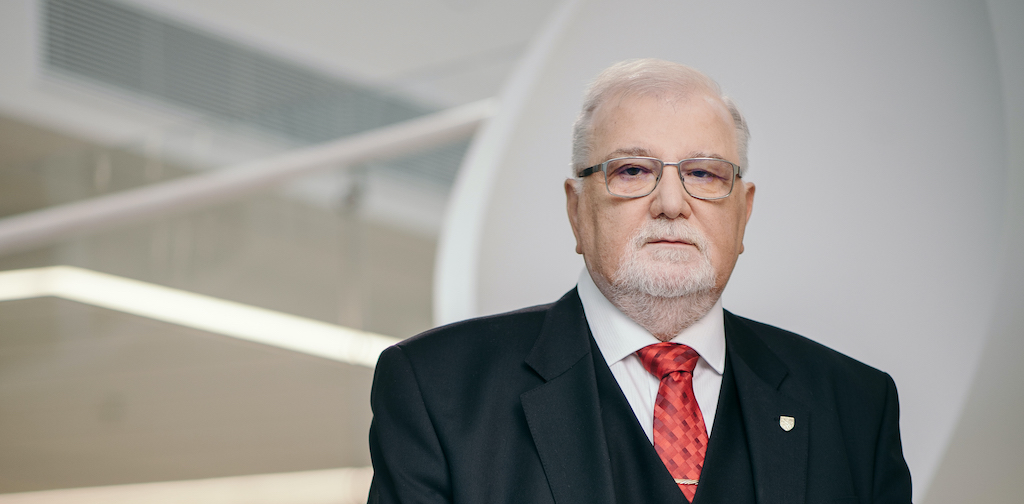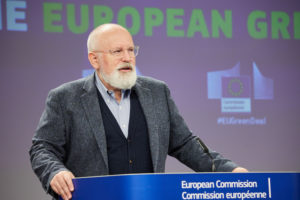
We already had the opportunity to discuss this law in July at the informal Council and things have been moving since then. The presidency has been very active in bringing things to the Council, having first debates about this. But of course, this is a very comprehensive approach. I don’t think we have ever presented anything, from the side of the Commission, that comprehensive, that transformational for our society. The background of this is obviously that we need to stay within the law that we have all established, which is the Climate Law.
We need to reduce greenhouse gas emissions by at least 55% by 2030 as compared to 1990, which is an increase from 40% to 55%, which is huge, a huge difference. And we need to reach climate neutrality by 2050. This is a legal obligation on all of us.
I would suggest discussing mainly two elements. Political elements. First, the new elements in the package. And second, whether the package that we have put on the table has the right distribution of ambition and efforts across the different proposals, sectors in economies and societies affected, between Member States, and between Regions. I think this is the way to look at it. Is this fair. Is this distributed in a fair way?
In terms of some of the new elements, the one comes to mind immediately, which is our proposal to have a new ETS for road transport and buildings.
Why do we make this proposal? The starting position is simple, emissions are not declining, it is rising. Energy efficiency in our buildings is not developing at the pace of where we need to be.
We are only at about 50% of where we would like to be if we want to reach our goal by 2030. So, the existing tools that are in place clearly don’t deliver the results that need. We need to come up with extra tools. Emission trading, as proven in other sectors, that it creates through market instruments created an emission reduction, a reduction that is very much needed.
But in this case, it also provides us as a means to address any possible negative social consequences. We give ourselves the instruments to make sure that our citizens are not struck by energy poverty because of this fundamental change. So, the ETS revenues come on basis of the polluter pays principle. So, it’s not the carbon price for citizens directly but for the big companies. Of course, I know the risk is always there that they pass that price increase on to citizens. But we see in the ETS that it also stimulates them to change their behaviour and to look for a cheaper way out. Which is a stimulus that works better than just increasing taxes, which would affect the consumers directly. And then of course we have the possibility to use the revenues, through the Social Climate Fund to avoid the risk of energy poverty or any other negative consequences we don’t want.
But I don’t want to be dogmatic with our proposal. I want to state here clearly what I have said before. What we need to achieve is reduction of emissions in transport and in the building sector. We have looked at all different options and from our analysis this seems to be the best option to achieve the goals and also have the possibility to make sure that you have the tools you need nationally to compensate your citizens for the possible negative consequences.
I have to stress; this transition needs to happen. And any transition of this fundamental nature will have consequences. Some you like some you don’t. And it is the art of politics that you stimulate the positive consequences and mitigate the negative consequences. But we can’t food our citizens by telling them that nothing is going to happen, and you can stay put. You won’t feel anything. No. This is a fundamental transformation we need to go through, to avert the worst of the climate crisis. So, I insist, I believe the social climate fund, which is an integral part to the new ETS can really help us achieve these issues. No ETS, no Social Climate Fund, then we will need to look to other ways to help our citizens.
The second question, the distribution between of efforts between sectors, between Member States or within Member States, that is a big question we need to address in political terms.
All the sectors, al the ministers, all the governments will have to look at this in an integrated way. This will only happen if it is perceived as fair within societies, but also fair between societies. That is the complexity of what we are doing. If it is perceived as unfair within societies then we will never get the political support from our citizens to do what needs to be done. If it is perceived as unfair between societies, between Member States then we will be paralysed in the Council and we will not be able to get things done. The element of a Just Transition to this situation, of a fair distribution of the difficulties and the possibilities is an essential element of the package.
This has become very topical in the last couple of weeks because of the current increase, huge increase in energy prices. This has sharpened our focus in politics and in society on what could happen if energy prices soar and what this means for our citizens but also for our economies.
Some, for ideological reasons, or sometimes economic reasons in protecting their vested interests, have argued that the Green Deal is to blame for this. And I want to say clearly, that had we had the Green Deal 5 years ago, we would not be in this position. Then we would have much more renewable energy of which the prices are consistently low, and we would not be this dependent on fossil fuels from outside of the European Union.
The wrong response to this would be to slow down the transition to renewable energy. The right response is to keep the momentum and perhaps even look for ways to increase the momentum.
Of course, people then say ‘but ETS is to blame’. Let me be very clear, if you look at the price increase due to ETS it is at maximum 20%, one fifth of the total price increase. So, it does have an effect on the price. But if you understand that the effect is limited, then tinkering with the ETS will also have limited effect on countering the effects. So, it would not be smart to undermine the ETS system we need because it will not have a substantial effect on the prices. What we need to do is address the market issues that are linked to the price increase.
The core issue is that we have to make sure that the most vulnerable are not unduly affected by what is happening now. The core of the issue is that we need to have the instruments, like in any energy crisis, that these peaks don’t affect our citizens, and that we respond to those. The Commission will come forward with a number of proposals next week that could help solve the issue.
So, in view of the climate crisis, higher prices for fossil fuels also set incentives for lower fossil fuel use and the investment in renewable energies. Now, I don’t mean the prices that we see now, that is completely out of this world. But that there is a trend, that fossil fuels become relatively speaking more expensive than renewables, does help the investment in renewable energy. And it is continuing. It is our task to support our businesses and citizens to make this transition a success for everyone. Again, let me underscore this, the best answer to this problem of today is to reduce our reliance on fossil fuels – the best and consistent response.
The new EU Forest Strategy is in the agenda. The Commission fully agrees that also the Environment Ministers should be part of this discussion. Many are late coming to the understanding that this is not about trees put next to each other, harvested and used. Important. But it is also about ecocide, about the health of our forests.
Our forests are in bad shape. Every report that comes out shows this. The recent report of the European Court of Auditors also points in this direction. All of the reports show this. We have a huge task and Ministers cannot be held away from this discussion; they have a huge role to play in this. If we take the issue of carbon sink, or the issue of, let me be technical, LULUCF, seriously: if we really want healthy forests to be part of the solution, we need to look at this also from an environmental angle and not just from an angle of forestry and agriculture.
I know that the package has different effect on all the Member States and that we need to look carefully at all these effects and be in constant contact with all the Member States for all these effects.
If we look at the trajectory between now and 2050 that is almost the same trajectory as if you would look back to the fall of the Berlin Wall.
If you have seen what we have done since that moment until now, and you see what the transformation was in those countries suffering under the communist oppression until 1989 and you see them now. If you had asked me in 1989 if they would be Members in 2004, if they are going to be where they are in 2021 then I would say ‘no, impossible, it is impossible – it is fiction’. If I would have thought Poland in 2021 would be the biggest exporter of electric busses? If I would have ever thought that in Poland, there would be such a high uptake in solar panels by citizens all across the country in 2021? Sometimes I think we underestimate our own abilities to adapt to new circumstances and grasp new opportunities.
I believe reaching climate neutrality by 2050 is not a pipe dream. It is possible!
That’s why we have made these plans in such a way that they will set us on the trajectory to 2050. But the plans are also intrusive. We can’t go back to citizens and say, ‘well you can sleep on both of your ears because nothing is going to happen’. It’s going to be intrusive.
But let’s also keep in mind how intrusive it will be on our lives if we overshoot 2 degrees, if we go to 3 or 4 degrees. What will happen to harvests, what will happen with wildfires, what will happen with floods? Already with 1 degree we’re struggling with the effects of climate change. I don’t even want to imagine what will happen if we overshoot the Paris Agreement. That’s the context that we need to see.
The ETS is being blamed in some Member States, by some leaders. Last night and this morning again, some leaders blame the ETS for the high energy prices. The raise in the gas price, has eight times more effect on the price of the electricity than the ETS. Eight times. So, if we would blame the ETS for this and do something on the ETS then we would only have 1/8th of the opposite effect on the reduction of the price than if we tackle what’s happening in the market. Eight times more is the raise in the gas price.
By the way, the ETS: Member States this year until now have had almost 11 billion Euros more revenues in the ETS than in the same period last year. They have to use it well, to use that in your transition policies. That’s the whole point.
So, if we look at the ETS we don’t only look at the cost but also the revenues what we can do in transformational policies. And our industry is adapting and is reducing their carbon footprint. Don’t bad-mouth the ETS, we have to use it as a method to both incentivise the right changes and at the same time look at it as a means to invest and compensate citizens for that.
Let’s also look very carefully at where the subsidies are going. The IMF has just calculated that the fossil fuel industry gets 11 million dollars a minute in subsidies. Just imagine if only a fraction of this could be invested in renewable energy, what effect would be. These are also things we need to address in the context of what’s happening now.
Nobody can claim they’re not affected by it. We’re all in the same boat. The only thing is, that we have to find solutions that are fair, that take into account everybody’s different starting position. Because we’re not in the same position. Because if like Austria 75% of your electricity is renewable and compare it to Poland where 75-80% is still coal based then that is a completely different starting position we have to take this into account. But if we do that in a just way then we can achieve this, we can have a 55% reduction in emissions by 2030, and we can be climate neutral by 2050.





